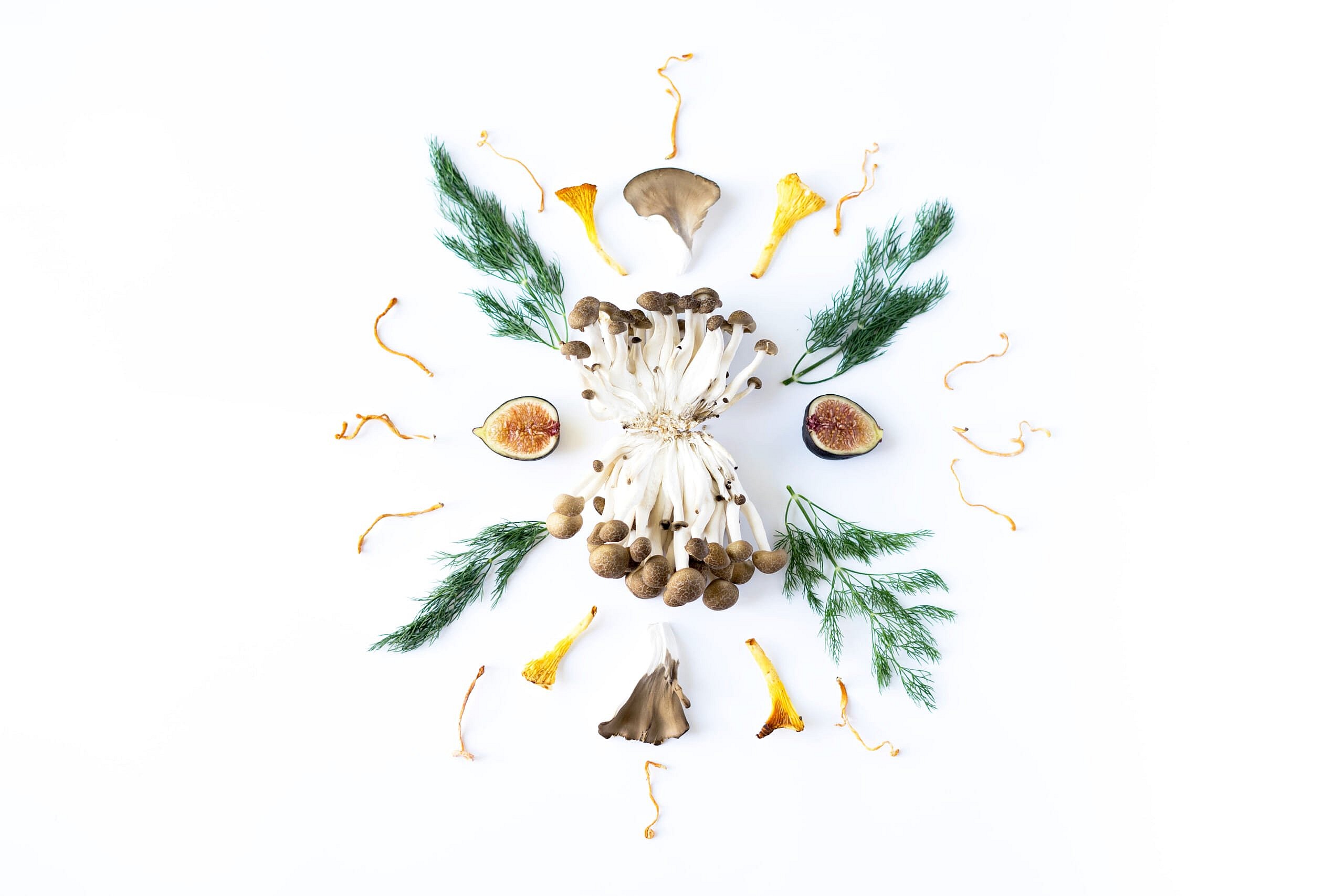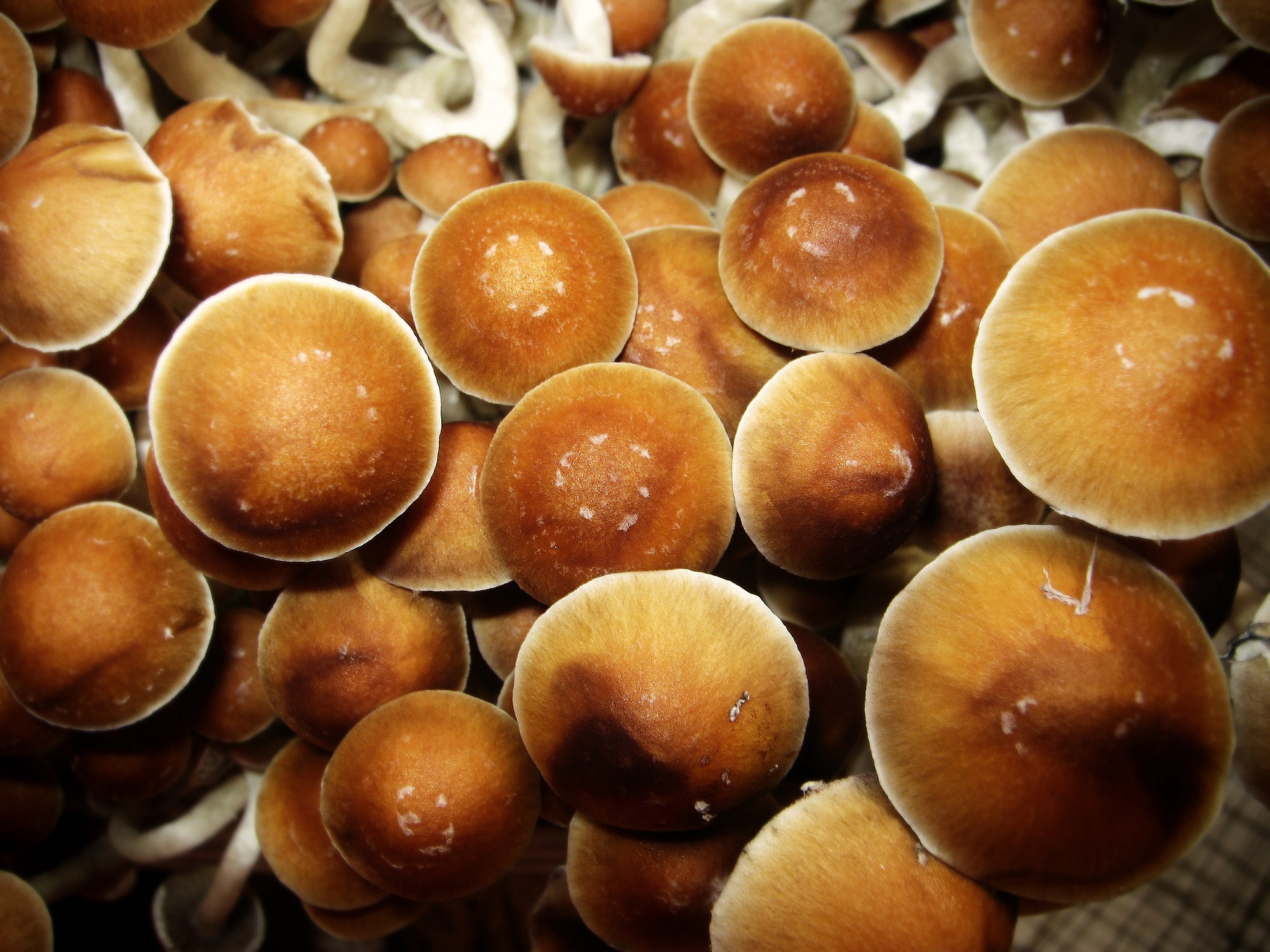7 Far-Out Facts About Psychedelic Mushrooms
Here’s everything you need to know about the most magical of mushrooms.


As the founder of a functional mushroom company, I often get asked if our mushrooms will make you high. While functional mushroom-like lion’s mane and shiitake have magical nutritional benefits, they are not “magic mushrooms.”
But as a major mushroom enthusiast, it’s hard not to be also interested in the rich cultural traditions and passionate stories people share with actual psychedelic mushrooms.
We also now know from research conducted at John Hopkins, New York University, and U.C.L.A, that under specific circumstances, psychedelic mushrooms could potentially offer positive effects to humans. Unfortunately, plenty of incorrect information is being spread about their benefits.
With so much to learn about psychedelic mushrooms, here are the 7 things I really think everyone should know.
Important Note: This article is in no way telling you that you should consume Psilocybin, Amanita Muscaria, or other psychedelic mushrooms. This is for educational purposes only due to increased interest in their mental and physical health benefits. These drugs are definitely not without negative side effects. Psilocybin is also currently regulated as a Schedule 1 drug, and there are severe legal penalties for possession.

1. Psilocybin Isn’t the Only Psychedelic Mushroom
When you say “magic mushroom,” most people think of Psilocybin. Psilocybin is a hallucinogenic compound found in more than 75 species of mushrooms throughout the world. Fresh or dried Psilocybin-containing mushrooms are eaten fresh, dried, or powdered into capsules. It can also be synthesized in a lab.
While Psilocybin is definitely the most common compound in psychedelic mushrooms, it’s not the only one. Another psychedelic compound is muscimol. The Amanita Muscaria mushrooms (the iconic red and white toadstool) are the most common source of muscimol. You probably know it as the mushroom emoji on your iPhone.
With both mushrooms, the dose, setting, and person are all variables that affect results. They take 20 minutes to 2 hours to take effect and the trip will last 3 to 6 hours.
Psychological effects include heightened sensory experiences and perceptual distortions (brighter colors, taste), hallucinations, altered perception of space and time, an inability to distinguish fantasy from reality, and more. Based on anecdotal evidence, Amanita Muscaria is said to often produce “darker” trips than “happier” Psilocybin.
2. Psychedelic Mushrooms Have Been Used for Thousands of Years
It’s been a long, strange trip. Cultures around the world have used Psilocybin and Amanita Muscaria for both healing and spiritual growth for a very long time.
In Northern Algeria, there are 7,000-9,000-year old cave paintings depicting mushrooms. In Central and South America, hallucinogenic mushrooms were considered god’s flesh, and therefore highly sacred. In Siberia, Amanita Muscaria was used by Shamen in specific rituals to communicate with a greater spirit and the dead.
While the long historical use of anything doesn’t mean it’s good for humans, it’s hard to argue that “magic mushrooms” would not have a special place with our ancestors.
3. Psilocybin Could Be a ‘Trip’ to Jail
In the US, the possession, sale, and transport of Psilocybin are illegal. It is a Schedule 1 drug. Possession is a misdemeanor punishable by up to a year in jail and/or $5,000 fee (minus the lawyer cost). Second offense becomes a felony with a prison sentence of 3.5 years and $10,000 fee.
An interesting caveat is that the possession of the mushrooms containing psilocybin is not scheduled. Only the compounds themselves.
4. There’s One Legal Psychedelic Mushroom
While Psilocybin possession can have heavy legal issues, Amanita Muscaria does not. In fact, it is only illegal in Louisiana, the Netherlands, and Romania. It has rich cultural traditions in Siberia and Lapland, and based on convincing evidence, many believe it plays a very important role in our current Christmas traditions. I love this story and am telling it in my newest book: Santa Sold Shrooms–The Origin Story of the World’s Most Famous Person.
5. Are Psychedelic Mushrooms Safe?
There are no clear reports that Psilocybin-containing mushrooms are psychologically or physically addictive. Their use does also not lead to dependency. However, with regular, repeated use of Psilocybin, tolerance builds up. Amanita Muscaria is also not addictive.
For Psilocybin, the median lethal dose (LD) is about 17,000,000mg of dried mushroom with a 130lb person. Based on anecdotal evidence, the “normal dose” of dried Psilocybin mushroom people take is around 1,000-2,000mg. So, based on this information, it would seem almost impossible to ingest the LD.
For Amanita Muscaria, theoretically, 15 caps could be a lethal dose. There are no reliably documented cases of death from Amanita Muscaria.
There is, however, a high risk of misidentifying Amanita Muscaria, and it has very deadly relatives. Most mushroom-related deaths are caused by two other Amanita mushrooms–aptly named Death Cap and Destroying Angel mushrooms.

6. There are Many Possible Health Benefits
Psychedelic mushrooms seem to be coming out of the woodwork and into the mainstream for several reasons:
- Spiritual Growth
Many psychedelic mushrooms lead to people having deep experiences feeling connected to the world and their god(s). In a double-blind study at John Hopkins, over 50% of people rated the experience with Psilocybin to be the single most meaningful experience in their life (similar to the birth of their first child), and 1/3 rated it as top 5 spiritual experiences. While the actual trip doesn’t last long, vivid memories of this spiritual journey seem to stay with you for much longer.
- Creative Potential
Psilocybin is gaining traction in the start-up and business worlds to help quiet thoughts of worry and self-criticism. People argue that it could help you avoid habitual thought patterns and can open your mind to new ideas. Unfortunately, there isn’t currently much, if any, scientific evidence to support this use-case.
- Mood Stabilization
Researchers are beginning to investigate Psilocybin for treatment-resistant depression. For healthy people, it seems to increase positive mood.
- Alcohol and Smoking Cessation
While it may seem counter-intuitive, Psilocybin actually shows promise in reducing addiction to alcohol and cigarettes.
- Long-term Care
Psilocybin has also been given to psychologically distressed cancer patients with depression or anxiety. In two trials at NYU and John Hopkins (one randomized double-blind, and the other randomized controlled), up to 80 percent report clinically significant decreases in depressed mood and anxiety after 6 months.
Of course, complicated or “bad” trips are not to be dismissed. In all of these categories of health benefits and negative effects, much more research is needed. Plus, despite the recent studies, Psilocybin is still illegal.
7. Microdosing is a Good Way To Start
While most research is done on fairly high doses, microdosing is the way most people start using psychedelic mushrooms. Microdosing is taking a very small amount of Psilocybin (100-300mg vs 1,000-2,000mg) regularly, over a long period of time and has recently become very popular. There isn’t yet much research on microdosing, so all evidence is purely anecdotal. There are now even microdosing retreats one can go on.
Microdosers report a heightened mood, more energy, no paranoia, or groggy hangover letdown symptoms. This is not to say that even microdosing is to be taken lightly. Research has been limited due to the American War on Drugs, so we don’t know all the consequences of long-term use… even on micro amounts.
Finally, remember that medical and healing uses of magic mushrooms are very different than recreational uses of psychedelics. These are guided experiences, in a very controlled setting, with a therapist, shaman, or highly knowledgeable guide leading you through this journey.
If your curiosity is piqued, dive into more into the research on psychedelic mushrooms. No matter where the query leads you, I think the journey will be insightful.
Tero Isokauppila is the founder of Four Sigmatic, a nature-centric Finnish-American company specializing in functional mushrooms, superfoods, and adaptogens, as well as the author of Healing Mushrooms: A Practical and Culinary Guide to Using Adaptogenic Mushrooms for Whole Body Health and the upcoming book, Santa Sold Shrooms: The Origin Story of the World’s Most Famous Person.
